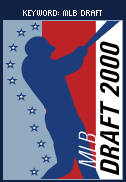|
|
|
|
 |
| ||
|
Scores Schedules Standings Statistics Transactions Injuries: AL | NL Players Weekly Lineup Message Board Minor Leagues MLB Stat Search Clubhouses | ||
| Sport Sections | ||
|
| ||
| Monday, June 5 | |||||
| A plan for a better draft Special to ESPN.com | |||||
| The draft is a rigged event. It was installed in 1965 to counter escalating
signing bonuses, negate the ability of deep-pocketed teams such as the
Yankees from signing whomever they wanted and -- like in other sports -- to
foster better competitive balance by letting the weaker teams pick first.
So rigging the draft further in attempts to create even more competitive
balance should offend no one. The majors already are considering a world-wide
draft, allowing the trading of picks, drastically reducing the number of
rounds (from the current 50) and capping how much teams can spend to scout and sign amateurs.
Our concept promises much less divisiveness -- simply give the weaker teams
more picks.
First, we will explain how we would do this and then why it would be a
productive system.
The plan Our draft would work the same in the first round as the current system, with the team that finished the previous season with the worst record selecting first and the team with the best record picking 30th. Ideally, beginning in the second round, we would then rank the clubs 1 through 30 in order of revenue. Obviously, an independent firm would have to be employed to determine what is revenue and to tabulate it, and the owners would have to oblige by opening up financial records to allow this. Mr. Selig, it is time not just to talk about the need to address ways to close the disparity between rich and poor teams, but actually to do something about it. It's your job to get the owner to cooperate. In the second and third rounds, the 15 smallest revenue clubs would pick in order from poorest to 15th poorest. The next pick would then belong to the poorest club again followed by the 16th poorest, then the second poorest followed by the 17th poorest. By alternating in this fashion, the 15 smallest revenue clubs would each get four picks between the second and third round -- an extra pick each round. For rounds 4 and 5, the 20 smallest revenue clubs would pick in order from poorest to 20th poorest. The next pick would belong to the poorest club again followed by the 21st poorest, with alternating picks until the end of those rounds. Thus, in rounds 4-5, the 20 smallest revenue clubs would each get four picks. In rounds 6 through 8, the 25 smallest revenue clubs would pick in order from poorest to 25th poorest. The next pick would belong to the poorest club again followed by the 26th poorest, with alternating picks until the end of those rounds. So in rounds 6-8, the five smallest revenue clubs would each get six picks. What is the end result? Over the first eight rounds and 305 picks -- about 10 rounds as the draft is currently constituted -- the five poorest teams would pick 15 times each, the teams with the sixth-10th lowest revenue would each get 12 picks, those with the 11th-15th lowest revenue would get 10 picks and the 15 largest-revenue clubs would get eight picks each. What the plan does Now the obvious question is why change so much? A lot of the answer is in the numbers. Last year, even with so much undrafted foreign talent in the majors, more than three out of four players still came from the standard June draft. A sizable 107 were taken in the opening 30 picks (first round or sandwich picks). But 440 came from Rounds 2-10 -- or nearly 50 percent of drafted major leaguers. That shows how fertile the draft is after the first 30 picks. In our system, poorer teams would get more opportunities to stockpile talent from a part of the draft where the costs are not as prohibitive as signing a first-round player. A poorer team also could take a harder line with a first-round pick with the safety net of having two second-round picks to fall back on. A poorer team would now be in position to gamble on that skilled college pitcher with an arm problem because it has extra picks to make safer selections later in the draft. Richer teams are hurt, but isn't that the way the draft is supposed to work now? Besides the richer teams have shown the financial might to delve into the foreign market and sign players from such places as Cuba or Korea to augment their player development systems. Drafting is an inexact science, and our system would give the poorer clubs more chances to find talent, and at a friendlier price. And, as always, securing talent is the only way to truly improve a team. Joel Sherman of the New York Post is a regular contributor to ESPN The Magazine. | ALSO SEE Stark: Abolish the draft Gammons: Who will go No. 1? Marlins choose prep star Gonzalez with No. 1 pick  | ||||
